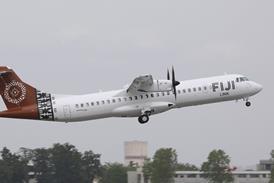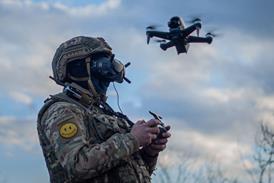Paul Lewis/SINGAPORE
Airbus Industrie Asia (AIA) has tabled a series of possible substitute collaborative proposals to the defunct AE31X, including working with Aviation Industries of China (AVIC) on a new widebody aircraft to follow on from the Airbus A300/A310.
The study project - dubbed the P305 - being discussed with the Chinese would be developed as a successor to the 200-seat A310 but would entail a complete revamp of the existing twinjet design.
Proposed changes include a 10/12-frame fuselage stretch, making the aircraft about the same size as the 250-seat A300, along with new generation engines and avionics and fly-by-wire flight controls to provide commonality with the latest Airbus models.
Engine candidates could include the A340-500/600's Rolls-Royce Trent 500 and a derivative of the Pratt & Whitney PW4000.
The original A310, which was introduced in 1983, is a short-fuselage derivative of the A300B2/B4 incorporating a new wing of reduced span and area.
Although the wing improved efficiency over the earlier A300 design on short-haul routes for which the A310 was originally conceived, it damaged the aircraft's performance when Airbus developed long-range versions to compete with the 767.
With the A330-200 now spearheading the Airbus attack on the long-haul 200/250-seat twinjet market, the manufacturer could adopt the P305 as the basis for a specialised short-haul widebody.
Airbus has already briefed Singapore Airlines (SIA) on the P305 study as a possible candidate to meet its W-aircraft requirement for a regional A310 replacement. The airline has stated a preference for a widebody, rather than a narrowbody such as the stretched Boeing 757-300, and is understood to view the A330-200 as not ideal for its regional mission.
Some operators in Europe and North America will have a requirement for a new 200-seater early in the next decade to replace A300/A310s and Boeing 767s delivered in the early 1980s, and Airbus is predicting a market of 3,000 aircraft over the next 20 years.
Another proposal being put to AVIC is possible participation in the A319M5, which Airbus is trying to launch on the back of a Northwest Airlines order. It is suggested that this may serve as an interim gap-filler to compete with the Boeing 717 and would also give AIA and AVIC more time to pursue a longer-term and lower-cost 100-seat replacement.
There is also the possibility of AVIC taking a small stake in the proposed A3XX 560/660-seater family. While none of these projects will give China the project leadership it sought with the AE3IX, AVIC has been forced to lower its expectations in the face of a Government clampdown on state support and a shortage of work.
Source: Flight International























